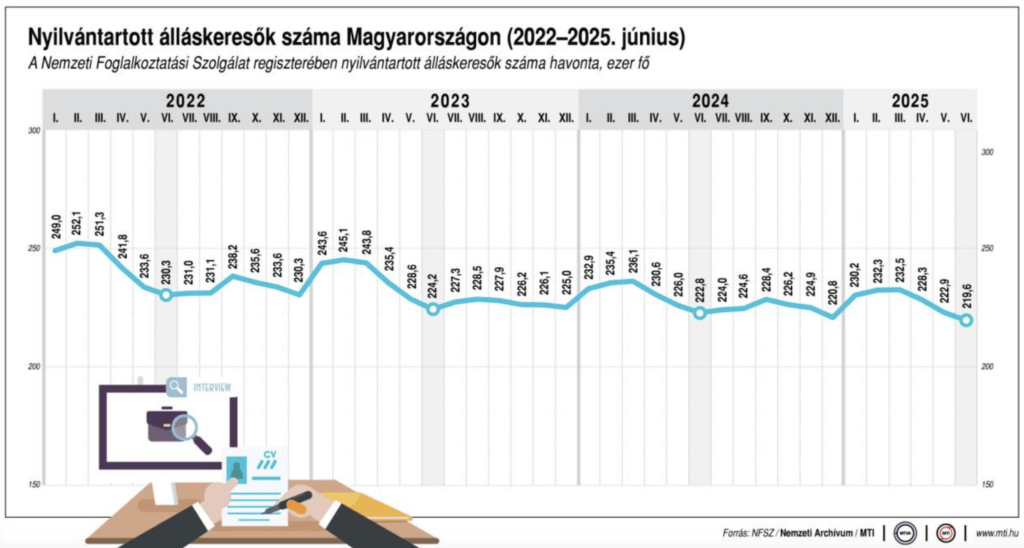The domestic labor market remains stable
The domestic labor market remains stable, with the number of employed people fluctuating between 4.6 and 4.7 million for years – said Sándor Czomba, State Secretary for Employment Policy at the Ministry of National Economy (NGM), on the M1 morning news program on Tuesday.
Sándor Czomba emphasized that despite challenges, Hungary ranks among the top ten EU countries in terms of employment and unemployment rates. The unemployment rate among young people aged 15–24 has also improved significantly, now placing within the top ten as well.
The state secretary explained that the backbone of employment is the 25–55 age group, but this segment has the least remaining labor reserves. Most reserves are found among those under 25 and over 55. The number of employed pensioners has grown from 30,000 to 150,000 in recent years.
According to the latest employment data, the service sector performed better, with a notable increase in headcount in retail, while the manufacturing industry saw a decline. He added that thousands of new jobs are expected to be created in the near future.
Czomba highlighted that finding a solution to the industrial challenges brought by technological transformation is not easy. He criticized the misguided Brussels economic policy, arguing that funds that could be spent on development are instead being used to support the war effort.

Number of registered job seekers in the National Employment Service registry, in thousands
The state secretary also noted that the unified 15% customs duty – agreed upon between the European Union and the United States – will pose serious challenges for companies producing for the American market.
Speaking on Kossuth Radio’s “Good Morning, Hungary!” program, Czomba said the number of registered job seekers was lower in June than ever before.
He pointed out that there are still regional differences in unemployment data: around Győr, the unemployment rate is between 1.2% and 1.5%, and even in Szabolcs-Szatmár-Bereg County it has fallen below 10%. The gap has significantly narrowed compared to a decade ago. The state secretary stressed the importance of directing investments to areas where the workforce is available – such as the regions around Nyíregyháza, Debrecen, Miskolc, Szeged, and Pécs.
Related news
Not from the couch, but from the office: We upload our resume after lunch, and resign mentally during snack time
🎧 Hallgasd a cikket: Lejátszás Szünet Folytatás Leállítás Nyelv: Auto…
Read more >Profession.hu: Less than half of employees received bonuses last year
🎧 Hallgasd a cikket: Lejátszás Szünet Folytatás Leállítás Nyelv: Auto…
Read more >No more “pig in a poke” in hospitality: How Eventrend Group reformed workforce management with the help of Giggle
🎧 Hallgasd a cikket: Lejátszás Szünet Folytatás Leállítás Nyelv: Auto…
Read more >Related news
Christmas shock in commerce: for the first time, we can pay with bank cards in fewer places
🎧 Hallgasd a cikket: Lejátszás Szünet Folytatás Leállítás Nyelv: Auto…
Read more >Hungarian Confectionery Manufacturers Association: trends in 2025 and prospects for 2026
🎧 Hallgasd a cikket: Lejátszás Szünet Folytatás Leállítás Nyelv: Auto…
Read more >Most grocery chains will be open until noon on December 24th
🎧 Hallgasd a cikket: Lejátszás Szünet Folytatás Leállítás Nyelv: Auto…
Read more >






